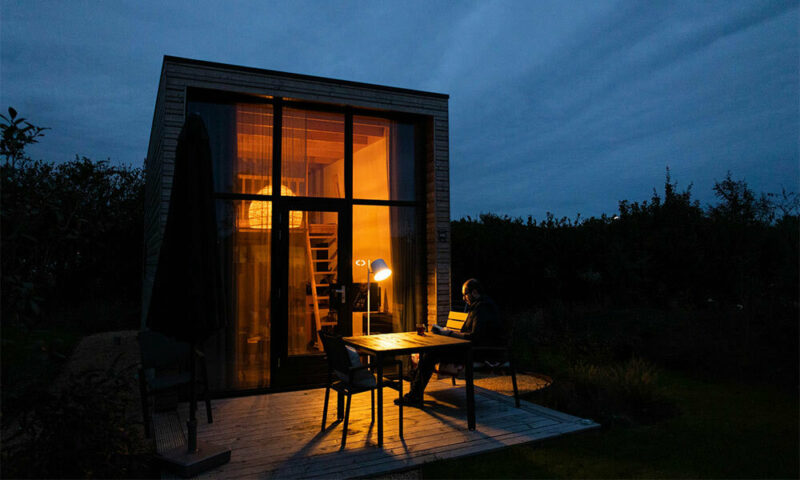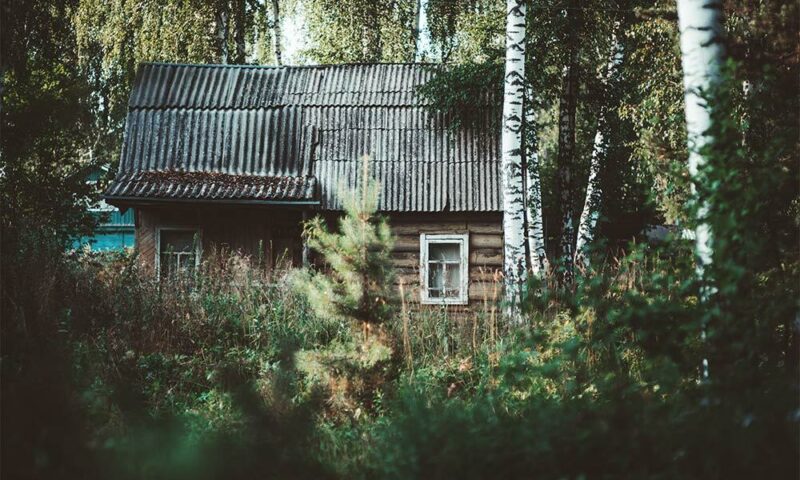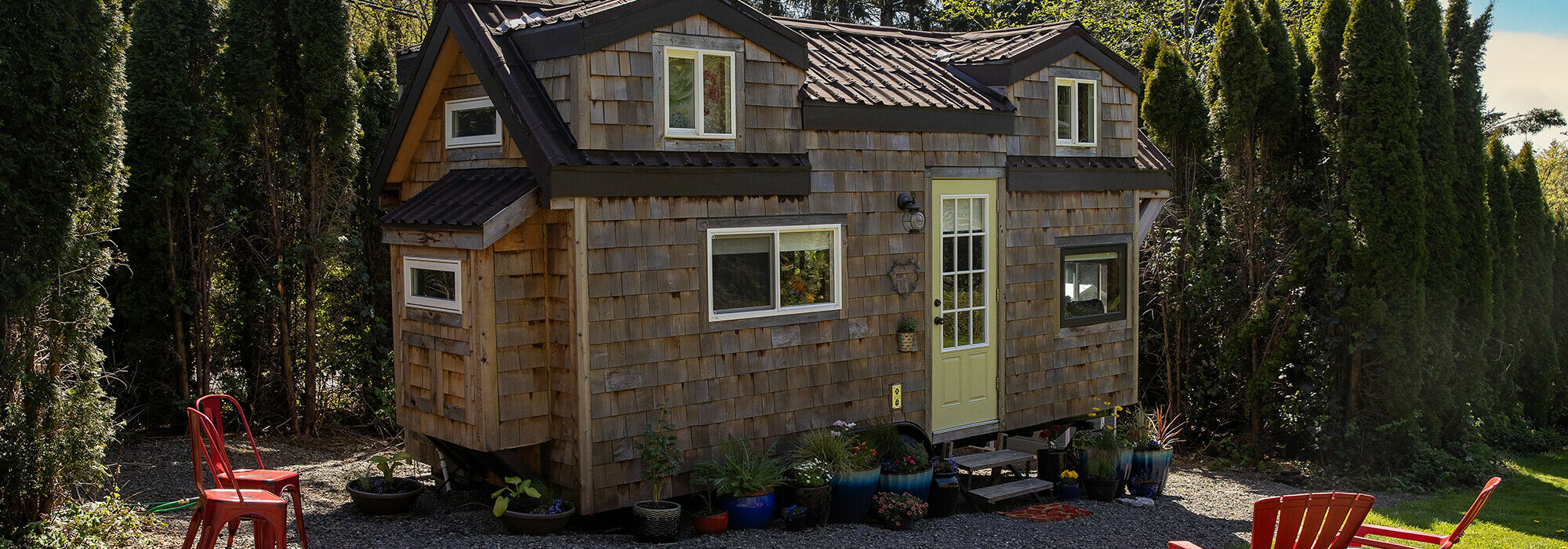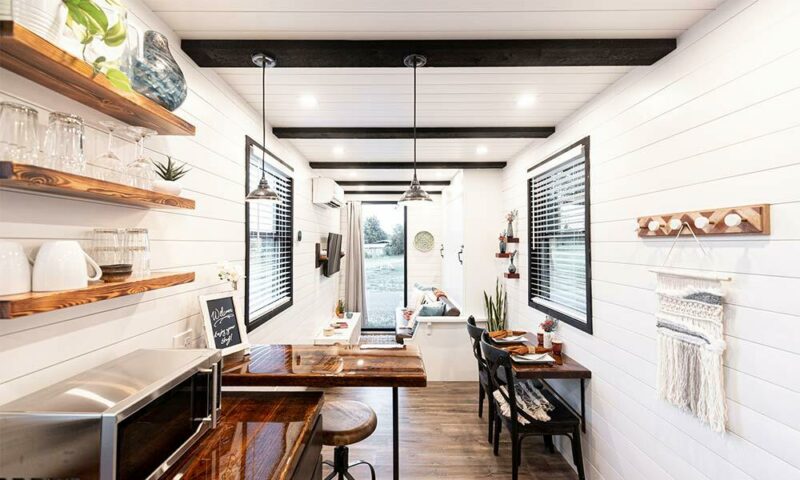Article Excerpt
Tiny homes are all the rage for people who want to simplify their lives. Financing a tiny home isn’t necessarily simpler than a regular mortgage, though.
Tiny homes have gained a great deal of popularity over the past few years in the U.S. and various other parts of the world. The “tiny home movement” espouses ideas about living simply. The tiny house itself serves as a symbol of a life where you only have enough room for what you absolutely need.
For many people, tiny homes represent freedom and a break from trends in which homes have been getting bigger and more expensive. Mortgage lenders may not provide loans for tiny homes, however. A home mortgage professional can answer your questions about financing options.
Can I get a mortgage for a tiny home?
The short answer is “yes”, as long as the following requirements are satisfied. Tiny homes often do not meet these qualifications.
Will the tiny home have a foundation, permanent utility connections, and compliance with local building codes, or will it be a tiny home on wheels (“THOW”) that could relocate elsewhere?
Will it be located on a property that already has a house or other primary residential structure?
Will the borrower use it as their primary residence?
Does the borrower need enough money to make the loan profitable for the lender?
Will the property comply with regulations set by your chosen loan program? For instance, if the home’s square footage is less than four hundred, the FHA will not allow you to purchase it.
What is a tiny home?
There is no single definition for a “tiny home” or “tiny house.” Either term typically applies to a single-family residence of 400 square feet or less. Some tiny homes may be as big as 600 square feet, or as small as 150 square feet. According to a 2021 survey conducted by the home improvement services platform Porch.com, the average tiny home in the U.S. is 225 square feet. The average full-size home is about 1,900 square feet.
A typical tiny home contains one or more bedrooms or sleeping areas, a kitchen, a bathroom, and a living room. Designers may get quite creative in maximizing the use of limited space, such as by incorporating elements like moving or retractable walls and Murphy beds to allow one room to serve multiple purposes.
Tiny homes’ popularity has received a boost from television reality shows and high-profile celebrities. Elon Musk, as part of his relocation to Texas, bought a prefabricated 375-square-foot tiny home from a Las Vegas company for just under $50,000. He either lives there or uses it as a guest house.
Tiny homes can be mobile, or they can be fixed in place on a slab or pier-and-beam foundation. “Tiny homes on wheels” (THOWs) are often built on camper trailers so they can be towed from place to place. To be clear, though, tiny homes with wheels are not recreational vehicles (RVs). Moving a tiny home tends to be an ordeal, and may require special permits if the home is wider than a standard vehicle. RVs, on the other hand, are designed with the road in mind.

Photo by Aysegul Yahsi on Unsplash
How much do tiny homes cost?
Tiny homes appear at first glance to be considerably less expensive than traditional houses. The Porch.com survey mentioned above found that the average sales price of a tiny home was $52,000 in 2021. The nationwide average sales price for a standard home at around the same time was $440,600, according to the Federal Reserve.
The total sales price of a tiny home only tells part of the story, though. Porch.com found that, on average, tiny homes cost 62% more per square foot than full-size houses. North Dakota had the least expensive tiny homes overall, but Arkansas had the cheapest per-square-foot prices in the country. Hawaii had the most expensive tiny homes, but it was also one of only two states in which tiny homes cost less per square foot than standard homes.
If you are interested in a tiny home, the cost will depend on factors like size, design, and features. You could spend as little as $20,000 or as much as something in the $100,000s. None of this includes the cost of the land where you will place the tiny home. If the tiny home is built off-site, you must also pay to have it transported to you.

What are other options for financing a tiny home?
Depending on the type of tiny home you want and the intended location, the following could be financing options:
Home Equity Loans or Lines of Credit
If you already own a home and have room on your property for a tiny home, you might be able to use the equity in your home to pay for it. You should be aware of some important features of this kind of loan:
Your primary residence, not the tiny home, would secure the home equity loan or home equity line of credit (HELOC).
The interest rate will likely be higher than the rate on your primary mortgage.
The total amount you can borrow will be limited to a percentage of your home equity. If you have $55,000 in equity and need $50,000 for the tiny home, you might not be able to borrow the full amount.
Loans through Tiny Home Builders
Some builders have partnerships with lenders who can provide financing for customers. The tiny home could serve as the security for the loan, or it could be an unsecured loan.
Personal Loans
You might be able to get a loan from a bank or credit union to finance a tiny home. These loans are usually unsecured, so they depend almost entirely on factors like your credit score. Interest rates are likely to be fairly high compared to most mortgages.
RV Loans
A THOW could be eligible for an RV loan if it meets certain criteria, such as certification from the RV Industry Association or a similar organization. RV loans are not intended to finance a primary residence, though, so this option might work best for a tiny home you plan on using for another purpose, such as a guest house.
Get financed for your next home purchase!
While we can’t guarantee mortgage approval for every tiny home, we can promise to find a way if it’s possible! All you need to do is fill out our easy online form and a mortgage advisor will reach out to set things up.




